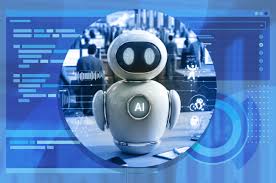 And just in time -- we are on the cusp of the utility of AI agents. Ironically, or maybe not so much, that improvement is inversely proportional to the diminished availability of people to solve our problems. We see bits and pieces of the decline of people in processes we need. Whether it is the sign-in kiosk in the healthcare waiting room, the check-in process at the airport, automated creation of pharmacy refill requests, or the customer service ‘interface’ that is now nearly all AI. And screaming ‘agent’ may still not bring the actual person to the phone. What’s positive and likely? [Information is drawn from interviews about “The Future of AI and Older Adults 2030.” Scheduled to be published in early January 2026] Here are four:
And just in time -- we are on the cusp of the utility of AI agents. Ironically, or maybe not so much, that improvement is inversely proportional to the diminished availability of people to solve our problems. We see bits and pieces of the decline of people in processes we need. Whether it is the sign-in kiosk in the healthcare waiting room, the check-in process at the airport, automated creation of pharmacy refill requests, or the customer service ‘interface’ that is now nearly all AI. And screaming ‘agent’ may still not bring the actual person to the phone. What’s positive and likely? [Information is drawn from interviews about “The Future of AI and Older Adults 2030.” Scheduled to be published in early January 2026] Here are four:
Personal profiles drawn from our activities. This is probably the most important that will drive all other interactions, whether it is as an individual, a hiring home care company, or a healthcare interaction with a doctor. These profiles are easily derived today with our permission and an agreed upon list of apps and services we use. As a result, we will receive suggestions and recommendations from AI agents that fit with our lifestyle and behaviors.
Specialized AI agents trained to do multiple related tasks on our behalf. These personal AI agents will remember previous conversations and tasks, suggest modifications based on newly available data, including health test results and changes in medications. Music and TV agents will remember what we liked and suggest similar – and they will use behavioral sensors to suggest adjustments. Agents can all be configured to speak in the preferred language and use the remembered preferences of the individual.
AI agents will help power the home care and senior living industries. As one home care executive noted, today our industry is human first, then tech-enabled. Moving forward, we want to be tech-first, human-enabled. Of course, the tech-first personal AI agents will have to be trained to understand much more than today’s online chatbot and user interfaces seem to grasp. Agents at work will have to have built in processes to respond to different issues and questions presented – and know when to exit and hand off the process to a person.
Wearables will be integrated into care delivery and wellbeing. With all the data being collected by wearables, they have great potential for helping us in our daily lives. We will want that data to be first, usable by us and with our permission, also shared with a care or service provider. For example, if a person is in rehab for a knee injury, a wearable can suggest walking a bit more than yesterday, doing a few more chair sit-to-stands, and trying simple balance exercises.
The concerns about AI will be well-addressed by tech and service providers. Today, hallucinations get a lot of press, mitigating controls very little. Failed projects receive multiple posts, successes much fewer. In the future, we will know that our AI tools are reviewed and cleared to help us, keeping spam away from us, and offering guidance to us that makes sense. Will that happen by 2030?

 And just in time -- we are on the cusp of the utility of AI agents. Ironically, or maybe not so much, that improvement is inversely proportional to the diminished availability of people to solve our problems. We see bits and pieces of the decline of people in processes we need. Whether it is the sign-in kiosk in the healthcare waiting room, the check-in process at the airport, automated creation of pharmacy refill requests, or the customer service ‘interface’ that is now nearly all AI. And screaming ‘agent’ may still not bring the actual person to the phone. What’s positive and likely? [Information is drawn from interviews about “The Future of AI and Older Adults 2030.” Scheduled to be published in early January 2026] Here are four:
And just in time -- we are on the cusp of the utility of AI agents. Ironically, or maybe not so much, that improvement is inversely proportional to the diminished availability of people to solve our problems. We see bits and pieces of the decline of people in processes we need. Whether it is the sign-in kiosk in the healthcare waiting room, the check-in process at the airport, automated creation of pharmacy refill requests, or the customer service ‘interface’ that is now nearly all AI. And screaming ‘agent’ may still not bring the actual person to the phone. What’s positive and likely? [Information is drawn from interviews about “The Future of AI and Older Adults 2030.” Scheduled to be published in early January 2026] Here are four: